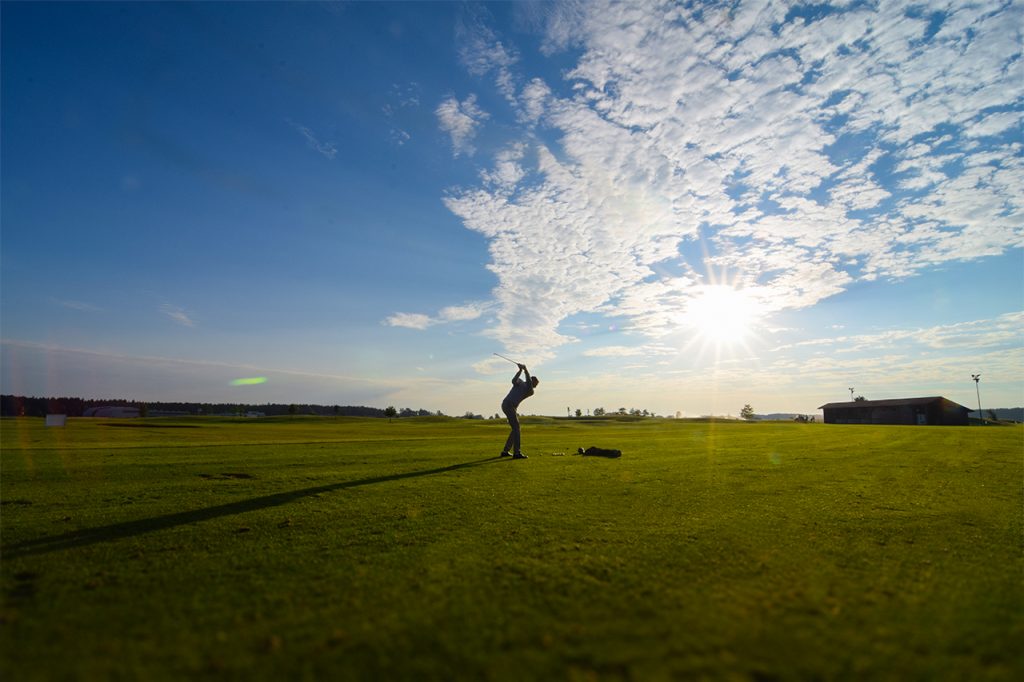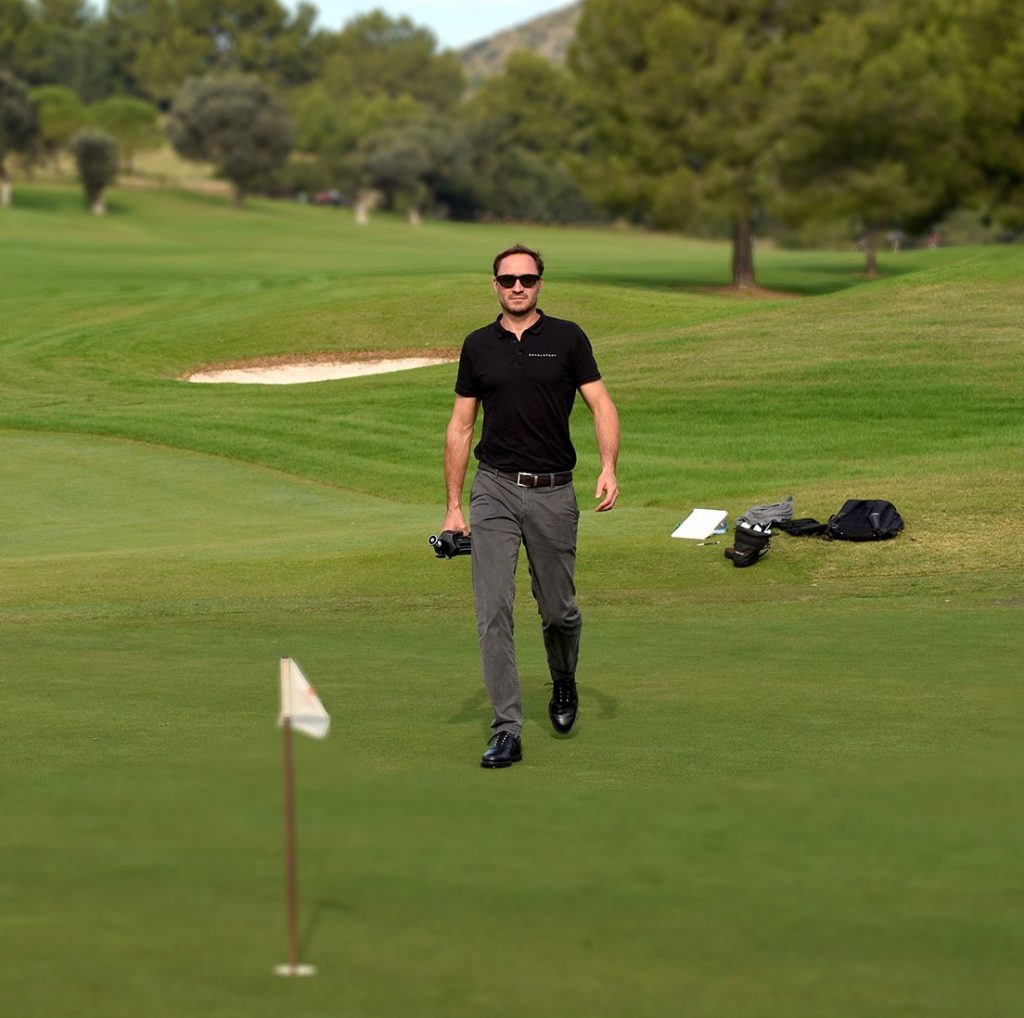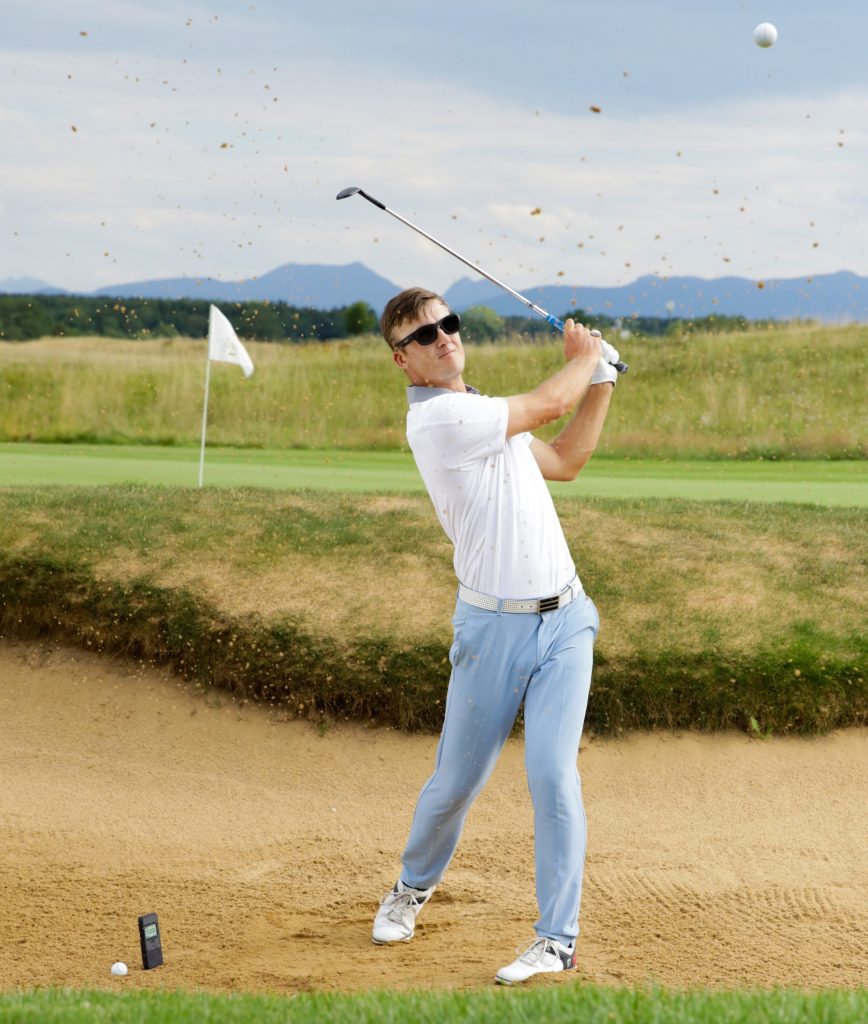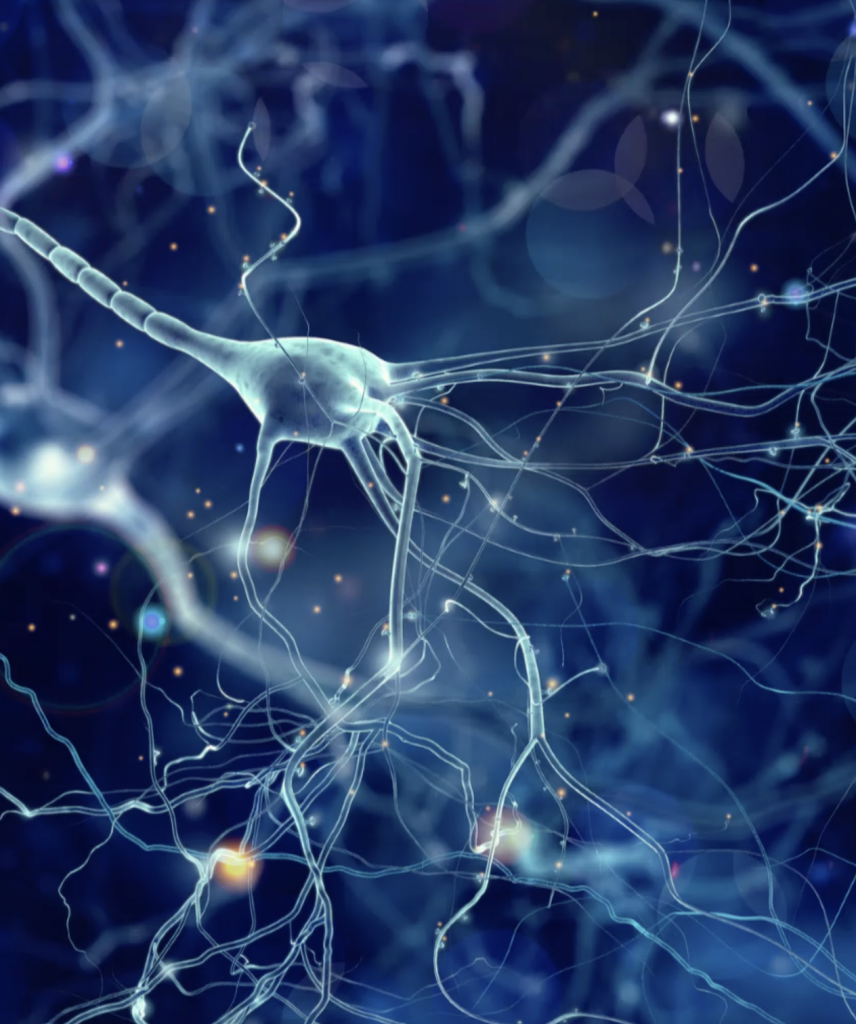What if we made you train like Tiger Woods?
As a young boy Tiger Woods often went out on the golf course with his father after he finished work. When it got dark, they just kept on playing until Tiger lost his ball. Not seeing where the ball went, he had to rely on only what he felt when hitting a shot to be able to find it.
Over time, Tiger became better and better at this, apparently finishing 18 holes in the dark.
After we had heard the story a few years ago, we were intrigued. How could we make use of the useful darkness, but only when we want it? How could it be possible to deprive us of our all so mighty visual sense, to become a better player? Since the elimination of our visual sense, for Tiger Woods caused by nightfall, alternative sensory information receives automatically more attention. Without seeing we perceive all other senses much more intensively. This effect is widely known from visually impaired, who are generally more adept in tactile and auditive skills.
This said, how can we deliberately direct our concentration to the other, so crucial senses?


How it all began
Over the past ten years, SensuSport’s co-founder Nils has been working as a sports psychologist for the german golf federation and german ski federation. In addition, he worked with athletes of several other sports and all strength. One fact always fascinated him the most: It is not the outstanding technique and outstanding physique that makes great athletes. What all great athletes in his opinion have in common is great feel and touch. Feel for the ball and the body movement.
But in practice, especially in golf, it was all about improving technique and physique. Developing feel and touch never played a big part. Much more did coaches and athletes seem to believe in the proposition/misconception that with feel and touch, “you either have it, or you don’t”.
But this is not true. The difference between athletes without feel and golfers with great feel and touch is pretty simple: Former have grown up only paying attention to what they see. Latter have grown up focusing on what they see and what the shot and the movement feel like.
With all the great training aids and growing technology in the golf business, nothing seemed to focus on supporting golfers in developing feel and touch.
The first time 'Feel' can be practised
But in practice, especially in golf, it was all about improving technique and physique. Developing feel and touch never played a big part. Much more did coaches and athletes seem to believe in the proposition/misconception that with feel and touch, “you either have it, or you don’t”.
But this is not true. The difference between athletes without feel and golfers with great feel and touch is pretty simple: Former have grown up only paying attention to what they see. Latter have grown up focusing on what they see and what the shot and the movement feel like.
With all the great training aids and growing technology in the golf business, nothing seemed to focus on supporting golfers in developing feel and touch.
This is why we came up with the idea for Sensu Training Glasses.
Today we have an internationally patented technology that consists of shutter glasses (known from 3D TV) and a detector unit connected wirelessly.
Through targeted elimination of sight, exactly when the ball is struck, you perceive your movement with an unprecedented sensibility. Just like Tiger, you focus on what really does count: Feel.
Adding feel and touch you can perfect the planning and execution of high-precision movements in sports, more specifically a hit, throw or shot.
Both professional and amateur athletes, old hands as well as young guns can benefit from this training effect.


The Sensu Training Effect
For motor learning our feel is crucial. In order to master a complex motion sequence our brain’s sensory system needs to cooperate with the motor system.
The human brain relies on sensory memories of experienced movement. The clearer and more accessible these memories are the more effective we are able to plan the upcoming motion sequence. Furthermore this defines the precision and success.
Our training device allows for a more intense sensation of ball and body feel, hence better possibilities to analyse and trainability.
During conventional practice, mainly visual information is processed. Since the visual feedback after a movement is blocked by our training device the brain directs its attention automatically on the remaining senses. These complementary, “felt” feedbacks can now be perceived with more awareness and used intentionally to improve the movement.
Children for example can learn in early years to be more aware of what they feel and build up trust in using feel and touch in their game. Grown-ups will come back from a rational controlled game to a more sensitive movement.
To learn with all your senses is a central topic in early learning institutions, schools and rehabilitation centres. The logical progression is to apply this powerful tool to sports of various disciplines, like soccer, football, basketball, tennis, baseball.
